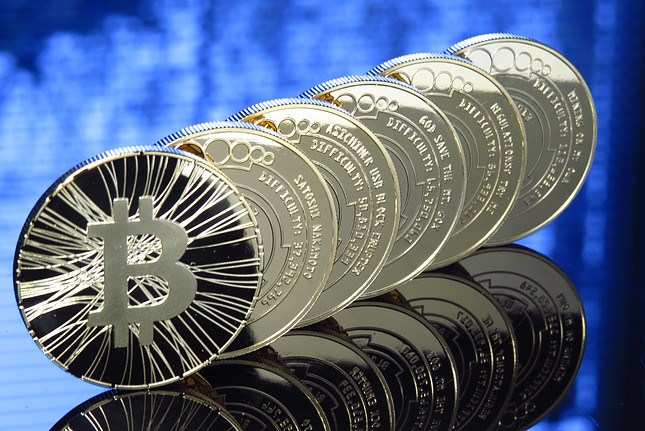There are things out of the U.S. Federal Reserve’s control. The central bank has a dual congressional mandate to maintain the U.S. dollar’s long-term value and achieve maximum employment, but it’s dealing with a mix of uncertainties as it pursues those goals.
Yesterday, Federal Reserve Chair Jerome Powell announced the monetary body will begin scaling back its historic asset purchasing program, one of the key levers it pulled to support and stimulate the economy during the worst of the coronavirus pandemic.
Beginning in November, the Fed will purchase $10 billion fewer Treasury bonds and $5 billion fewer mortgage-backed securities (MBS) each month until the $120 billion programs are depleted sometime in mid-2022.
The Fed left itself some wiggle room to pause or accelerate this “taper” depending on extenuating circumstances. It also won’t consider raising interest rates while still buying bonds – more flexibility.
It cannot be overstated how experimental this monetary outlay is, especially as it begins to wind down. Known as “quantitative easing,” or QE, the bond-buying program has more than doubled the Fed’s balance sheet (now valued above $8.6 trillion). It has had broad effects on the labor market, asset prices, and the dollars in your pocket.
Inflation is running hotter than at any point over the past 30 years, and consumer prices have climbed 4.4% in aggregate, double the 2% target the Fed has long targeted. Conflicting signals point to both a super-tight and super-loose labor market simultaneously. The quits rate, number of job openings, and salary and benefits paddings are all atypically high (pointing to a tight labor market). Yet, there are 5 million fewer people working than in February 2020.
“We have high inflation and we have to balance that with what’s going on in the employment market,” Powell said. “It’s a complicated situation.”
Considering the extent to which market watchers hang onto Fed-speak, Powell deserves credit for his consistent messaging. His magic voice is essentially the one thing completely under his control. Although the taper signals an end to easy money, markets weren’t spooked yesterday: the S&P 500, Dow Jones Industrial Average, Nasdaq 100, and Russell 2000 all closed trading at all-time highs.
Powell has been consistent on letting the economy “run hot,” and has made good on giving markets advance warning of policy changes. His colleagues at the Fed were unanimous in parking the benchmark interest rate between zero to 0.25% (though that, too, is subject to change, “depending”). Where Powell has changed perspective is only in a matter of degree – instead of saying elevated inflation is “transitory,” or a matter of specific coronavirus-related bottlenecks, he said mitigating factors were – shipping constraints aren’t forever.
Indeed, supply-chain logjams, superconductor shortages, and strong buying demand from American consumers are all things Powell watches without having much say in the matter. Same with COVID-19 caseloads, lockdowns, and market psychology.
So when it comes to tapering, or when or by how much to lift interest rates, it’s important to remember we’re watching a human being. You can disagree with his policies – and, boy, many do – but that’s an issue whenever we invest any one person with such authority.
Two sides of the coin
Bitcoin, as an alternative monetary base layer, stands apart from this human drama. A grand experiment born from the 2008 recession that was supercharged by the pandemic, most policy decisions for Bitcoin have already been made and hardcoded. It is hard where the dollar is soft. Subject to reason, where the dollar is the man.
But it’s also fully integrated into the global economy and the bitcoin currency’s price is also subject to Fed decisions. Bitcoin has benefited over the past several months of QE from the belief that it is an inflation hedge. Smart money – the Ray Dalio's of the world – bought into it and profited.
However, it’s unclear how the Fed will manage inflation going forward. For now, Powell has signaled that he’s choosing full employment over risks of elevated prices.
“We don’t think it is a good time to raise interest rates because we want to see the labor market heal further,” Powell said. “The level of inflation we have right now is not at all consistent with price stability.”
When the Fed starts to raise interest rates to cool the economy it could have a negative impact on bitcoin’s price. “To the extent, BTC is a hedge like gold, I think it could suffer,” the economist Claudia Sahm told me in a private message.
Then again, there’s also a belief that the Fed has already let inflation run too far and has limited means to cap it. In the short term, if Powell is to remain true to his word and finish buying bonds before raising rates, the agency doesn’t have a tool to pull in inflation until at least Q2 2022. A hyperinflationary environment, or even just fears of that happening, could drive money into bitcoin.
“On the other hand, the effects of the largest QE in history may lead to the largest inflation in history, regardless of the Fed attempting to scale back. If this happens, we expect demand, and prices, for bitcoin to rise to new all-time highs,” Joe DiPasquale, CEO of the cryptocurrency hedge fund BitBull Capital, told CoinDesk yesterday.
It remains to be seen how transitory inflation is and will be.
Transitory
It’s worth noting as well that Powell’s term as Fed chairman is ending in February 2022 (though his term as a Fed governor ends in 2028), and the Biden administration hasn’t given a clear signal as to whether he’ll stay on at the job. While Fed officials were in lock-step to begin phasing out asset purchases, many have contradictory views about how to manage (and even measure) inflation.
So will Powell’s mandate continue? Will bitcoin succeed in a world where the U.S. isn’t buying bonds? It’s just another human uncertainty.
All writers’ opinions are their own and do not constitute financial advice in any way whatsoever. Nothing published by CoinDesk constitutes an investment recommendation, nor should any data or Content published by CoinDesk be relied upon for any investment activities. CoinDesk strongly recommends that you perform your own independent research and/or speak with a qualified investment professional before making any financial decisions.
Recommended Content
Editors’ Picks

Litecoin Price Prediction: LTC tries to retake $100 resistance as miners halt sell-off
Litecoin price grazed 105 mark on Monday, rebounding 22% from the one-month low of $87 recorded during last week’s market crash. On-chain data shows sell pressure among LTC miners has subsided. Is the bottom in?

Bitcoin fails to recover as Metaplanet buys the dip
Bitcoin price struggles around $95,000 after erasing gains from Friday’s relief rally over the weekend. Bitcoin’s weekly price chart posts the first major decline since President-elect Donald Trump’s win in November.

SEC Commissioner Hester Pierce sheds light on Ethereum ETF staking under new administration
In a Friday interview with Coinage, SEC Commissioner Hester Peirce discussed her optimism about upcoming regulatory changes as the agency transitions to new leadership under President Trump’s pick for new Chair, Paul Atkins.

Bitcoin dives 3% from its recent all-time high, is this the cycle top?
Bitcoin investors panicked after the Fed's hawkish rate cut decision, hitting the market with high selling pressure. Bitcoin's four-year market cycle pattern indicates that the recent correction could be temporary.

Bitcoin: 2025 outlook brightens on expectations of US pro-crypto policy
Bitcoin price has surged more than 140% in 2024, reaching the $100K milestone in early December. The rally was driven by the launch of Bitcoin Spot ETFs in January and the reduced supply following the fourth halving event in April.

Best Forex Brokers with Low Spreads
VERIFIED Low spreads are crucial for reducing trading costs. Explore top Forex brokers offering competitive spreads and high leverage. Compare options for EUR/USD, GBP/USD, USD/JPY, and Gold.